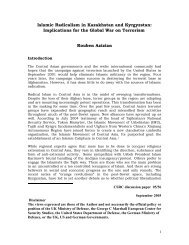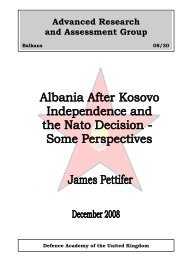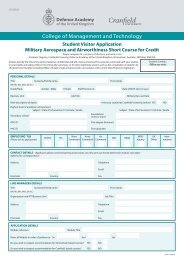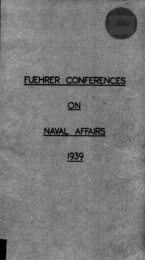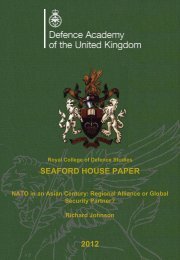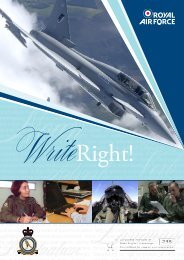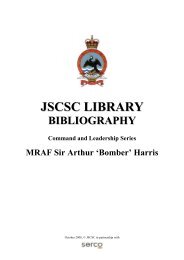Chapter 1
Chapter 1
Chapter 1
- No tags were found...
You also want an ePaper? Increase the reach of your titles
YUMPU automatically turns print PDFs into web optimized ePapers that Google loves.
MARITIME DOCTRINE IN CONTEXT1FlexibilityBearing in mind that the Royal Navy had been training and equippingitself solely for an anti-submarine battle against the Warsaw Pact forcesin the North Atlantic for over a decade and that it had not envisaged asupported amphibious operation for 20 years at least, switching to ananti-air, anti-surface battle in support of an offensive amphibiousoperation the other side of the world does imply a substantial degree offlexibility. Other examples of flexibility were a straight-off-the-cuffcommand organization at Northwood; first use of DSSS securecommunications in major operations; re-write against the clock of Rulesof Engagement; Ships Taken up from Trade in general and ATLANTICCONVEYOR in particular (until sunk on 25th May, she consideredherself almost a third aircraft carrier); use of RFAs as missile decoys; useof SSNs for air raid warning; use of T22/T42 combination in attempt tooptimise interdependence of Sea Dart and Sea Wolf; Lynx were used asExocet decoys; frigates were used for anything and everything fromtheir many accepted roles to AD pickets, decoys, and even minehunters.Co-operationCommodore Amphibious Warfare (COMAW) would say that he gotlittle co-operation from the Battle Group Commander. The BattleGroup Commander would say that he gave COMAW absolutelyeverything he could possibly spare and then some (see comments on‘economy of effort’ above). Viewed more objectively, co-operation wasforce-wide but not without occasional and natural angst. Theimportant thing to hang on to is that co-operation was entirelyadequate to get the job done in the face of considerable odds.13



